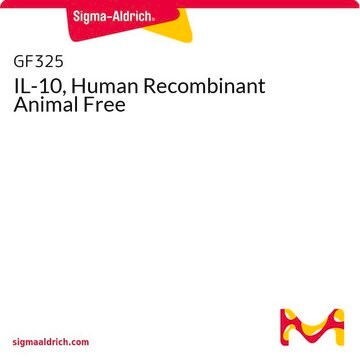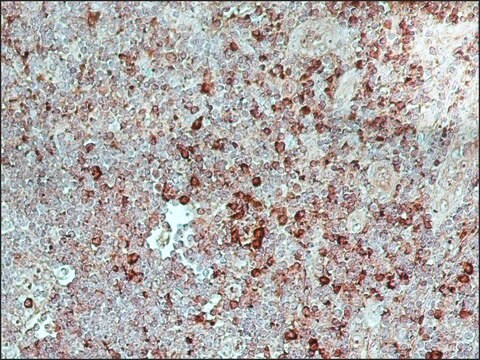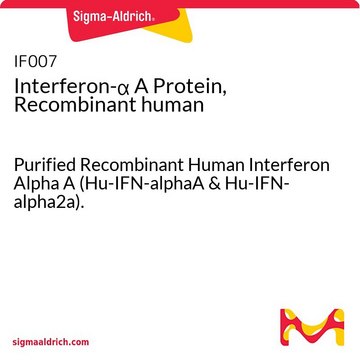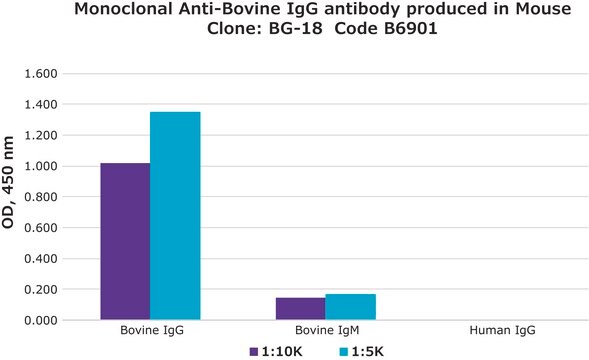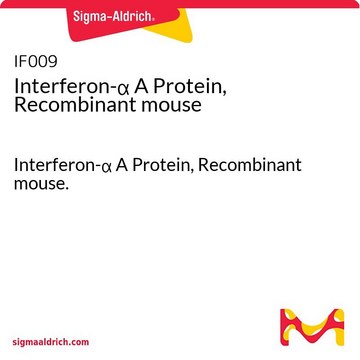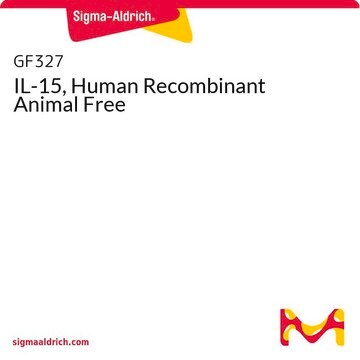H7541
IL-10 human
HumanKine®, recombinant, Xeno-free, >95% (SDS-PAGE), suitable for cell culture
Sinónimos:
Interleukin-10 human, IL-10
About This Item
Productos recomendados
Nombre del producto
Interleukin-10 human, IL-10, recombinant, expressed in HEK 293 cells, HumanKine®, suitable for cell culture
biological source
human
Quality Level
recombinant
expressed in HEK 293 cells
assay
≥95% (SDS-PAGE)
form
lyophilized powder
potency
≤1.5 ng/mL EC50
quality
endotoxin tested
mol wt
dimer 17 kDa (glycosylated)
technique(s)
cell culture | mammalian: suitable
impurities
≤1EU/mg
UniProt accession no.
storage temp.
−20°C
Gene Information
human ... IL10(3586)
¿Está buscando productos similares? Visita Guía de comparación de productos
General description
Application
Biochem/physiol Actions
Physical form
Preparation Note
Analysis Note
Legal Information
Storage Class
11 - Combustible Solids
wgk_germany
WGK 3
flash_point_f
Not applicable
flash_point_c
Not applicable
Elija entre una de las versiones más recientes:
¿Ya tiene este producto?
Encuentre la documentación para los productos que ha comprado recientemente en la Biblioteca de documentos.
Nuestro equipo de científicos tiene experiencia en todas las áreas de investigación: Ciencias de la vida, Ciencia de los materiales, Síntesis química, Cromatografía, Analítica y muchas otras.
Póngase en contacto con el Servicio técnico